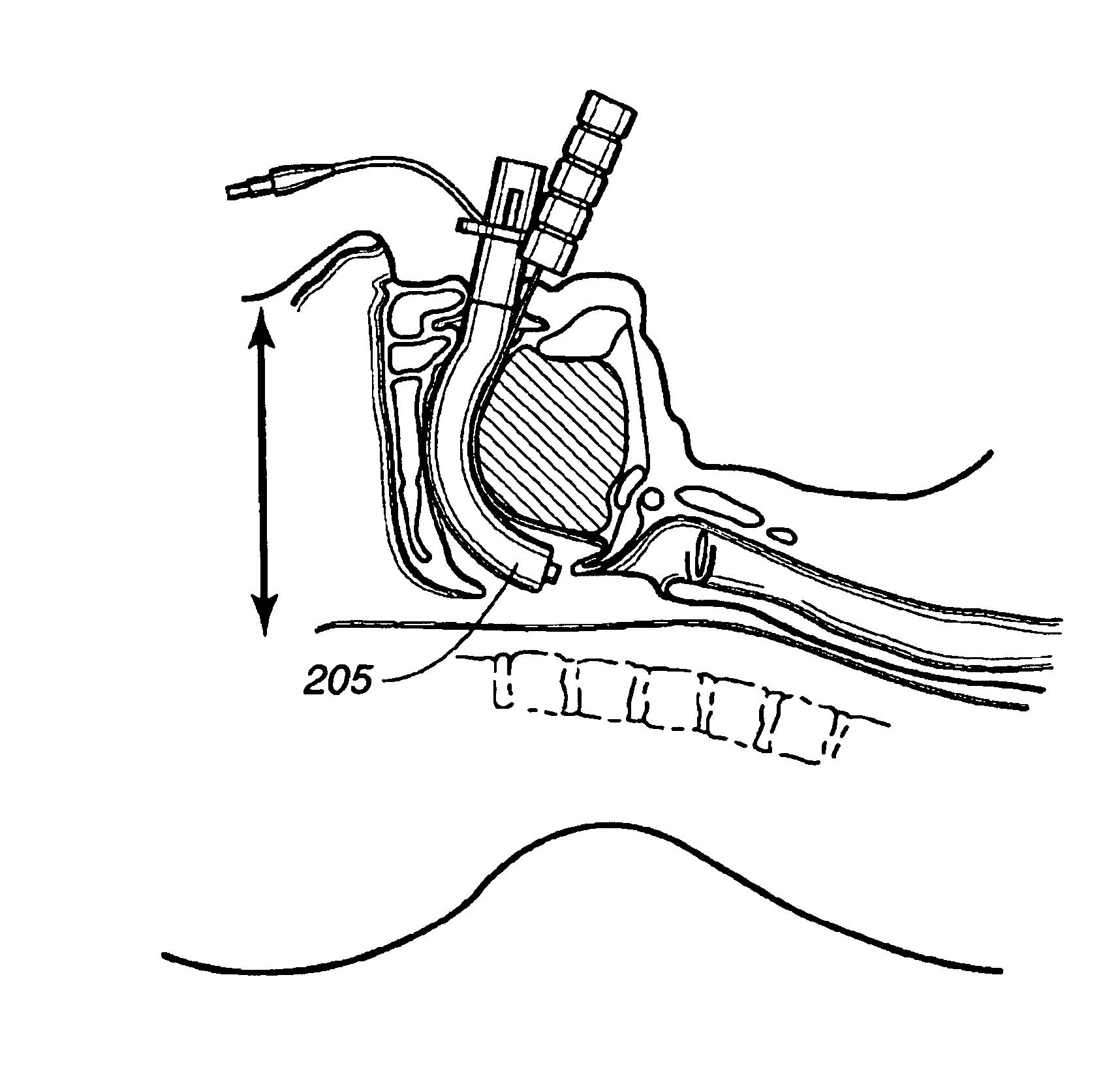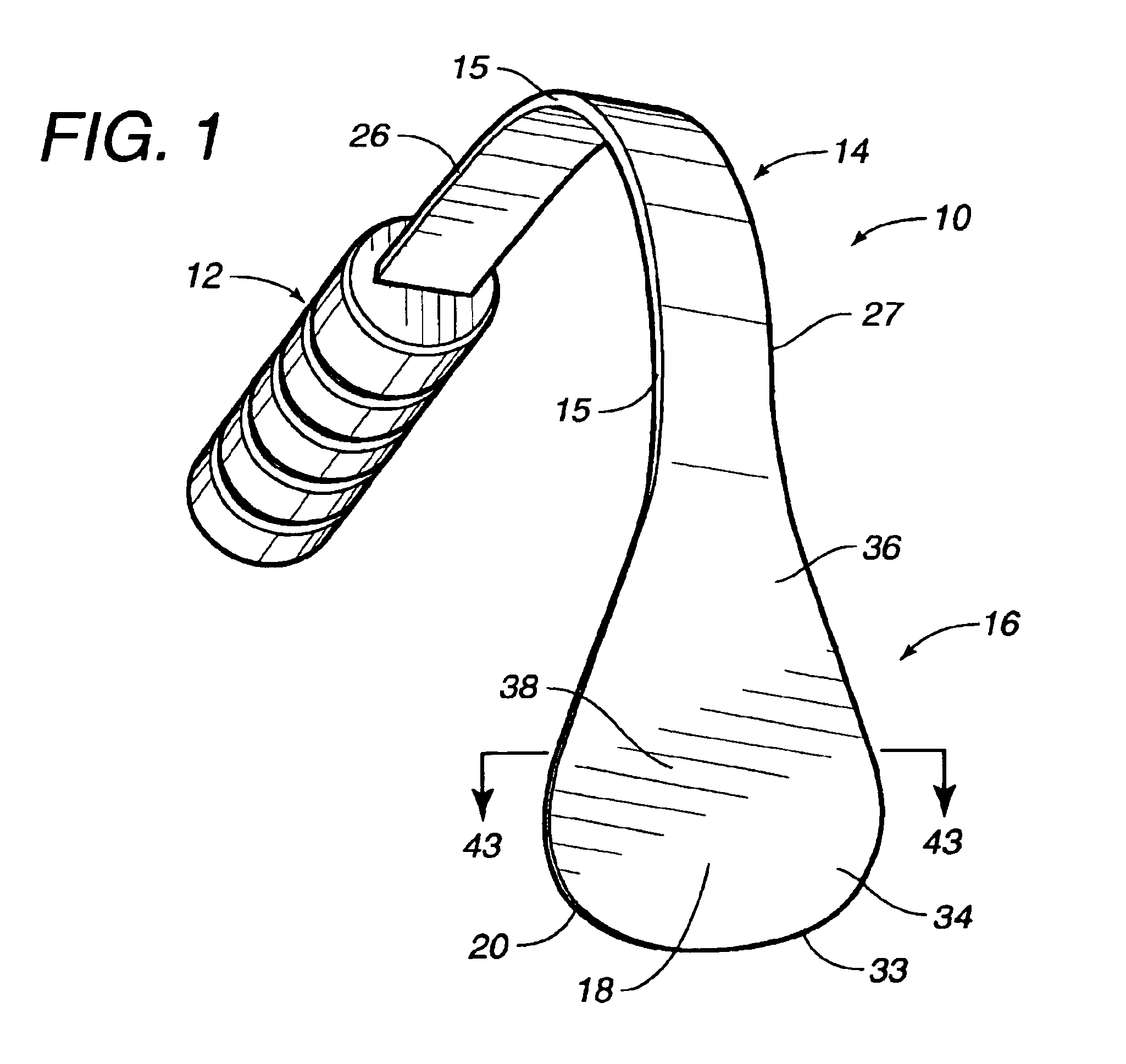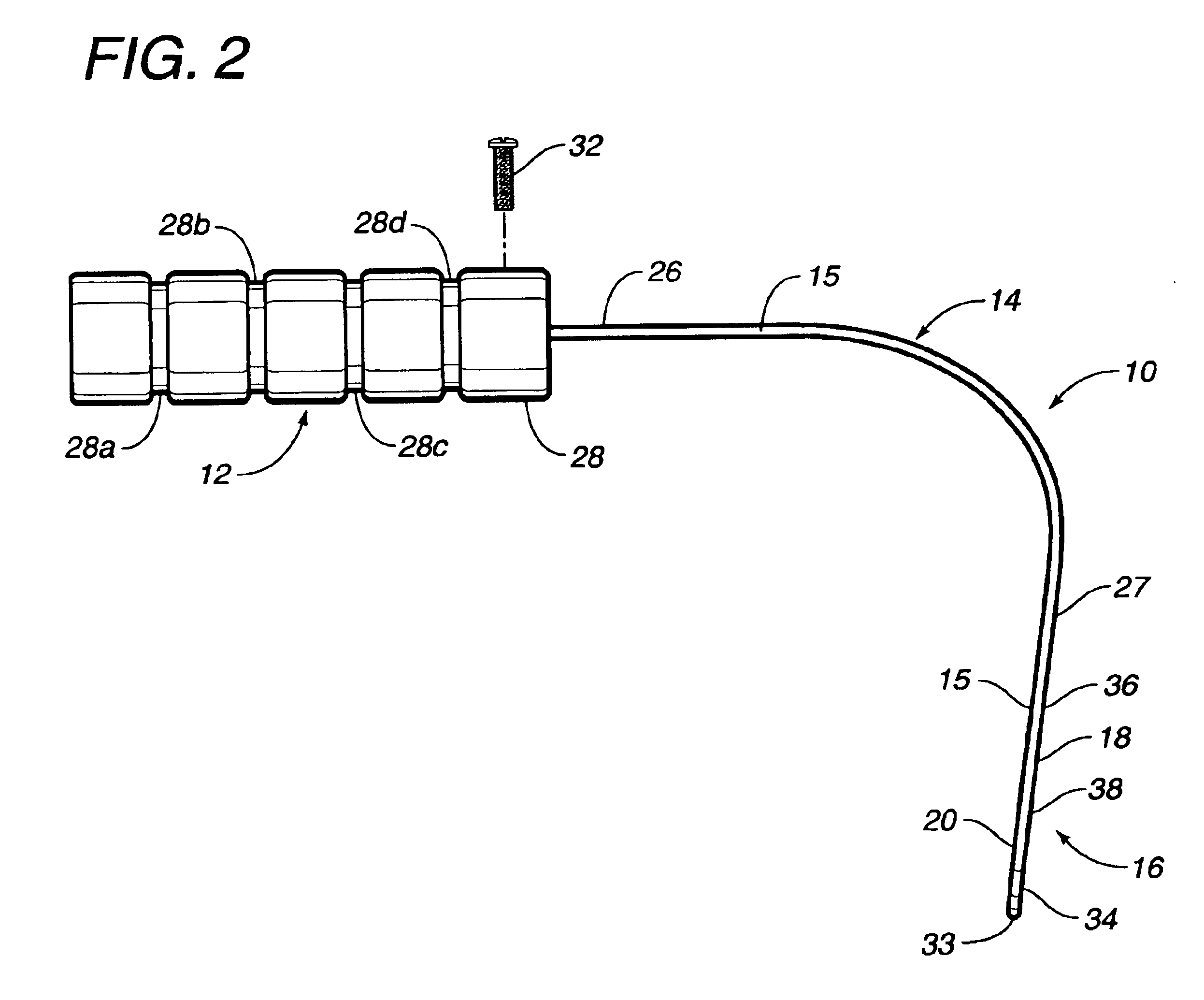Superglottic and peri-laryngeal apparatus for supraglottic airway insertion
- Summary
- Abstract
- Description
- Claims
- Application Information
AI Technical Summary
Benefits of technology
Problems solved by technology
Method used
Image
Examples
Embodiment Construction
[0058]The present invention provides an optimal tool for creating sufficient space for passage of a supraglottic airway device and attached cuff or pad into a patient's upper airway. As will be evident to those skilled in the art, by compressing and coaxing the tongue upwards and forwards to the front of the mouth, embodiments of the present invention increase space in the pharyngeal cavity while simultaneously flattening the tongue in the mouth, thereby increasing space in the buccal cavity. Such an optimal tool inherently raises the epiglottis into the bowl of the descended airway device cuff or pad, and is easily removable from a patient's mouth without disturbing the position of the cuff or pad or the attached airway tube, so as not to interfere with the rapid sealing of the airway device in the pharynx or on the larynx, per se. As will be clear to those skilled in the art, this optimal tool provided by the present invention reduces the risk of hypoxia, death, and other serious ...
PUM
 Login to View More
Login to View More Abstract
Description
Claims
Application Information
 Login to View More
Login to View More - R&D
- Intellectual Property
- Life Sciences
- Materials
- Tech Scout
- Unparalleled Data Quality
- Higher Quality Content
- 60% Fewer Hallucinations
Browse by: Latest US Patents, China's latest patents, Technical Efficacy Thesaurus, Application Domain, Technology Topic, Popular Technical Reports.
© 2025 PatSnap. All rights reserved.Legal|Privacy policy|Modern Slavery Act Transparency Statement|Sitemap|About US| Contact US: help@patsnap.com



